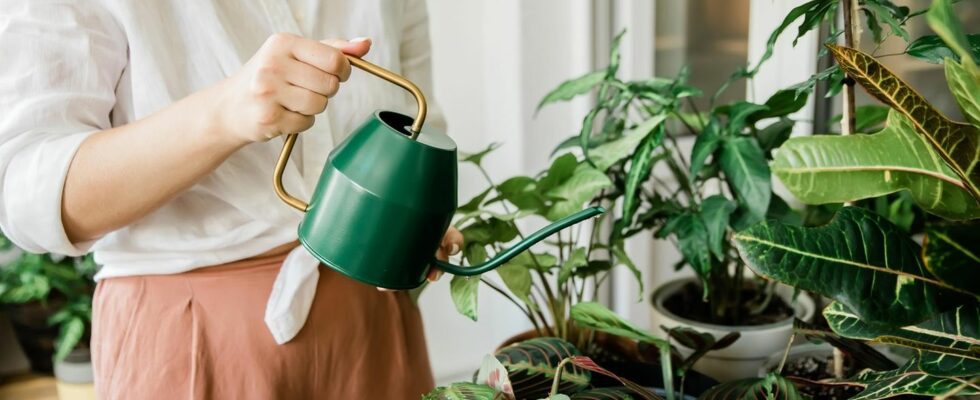Water plants properly
This Japanese hack will ensure your plants live forever
© Beznika / Adobe Stock
One or the other plant has already died in almost every household due to excessive watering or too long dry periods. This hack from Japan should help.
The plant lovers among us have tried everything: but watering rods or moisture meters are often not the right thing either. And they usually don’t look very pretty when they peek out of our carefully selected ceramic pot. In Japan, therefore, a natural aid is used instead.
Japanese irrigation with pine cones
What pine cones have to do with watering plants still seems to be a well-kept secret. On TikTok, content creator Hiro explains that they’re one of the best life hacks though. With a bit of luck, we’ll still have some left over from our Christmas decorations anyway and can give them a new meaning straight away. Simply stick a peg about two centimeters deep into the soil and water.
The trick is explained as follows: When the soil is moist, the scales of the cone close. On the other hand, if the environment is dry, it opens up again and you can see that your plant or the soil needs water.
It doesn’t have to be the fir tree
What we commonly refer to as “pine cones” are often spruce or pine cones. There are many different species of trees that bear and shed cones. In the case of pine cones, however, only individual scales fall to the ground while the cone is still on the branch. Real pine cones can only be obtained by picking them from the tree, which is not necessary.
Pine or larch cones also close and open. Scots pine cones, which are particularly lignified, take longer to do this than others. Spruce or pine cones, which we often easily find on the ground during a walk in the forest, are ideal for the potting soil. However, the cones will not last a lifetime and will eventually break apart. But that’s not too bad, because they supply the plant soil with nutrients.
Why do cones open and close?
The mechanism is easy to explain: In humid weather, the cones usually close to protect their seeds. They then open again in dry weather, since the conditions are better for the seeds that fall out. Namely when it is particularly windy and the seeds are carried as far as possible. Eventually, when the cones are empty, they fall from their branches. However, the movement also persists with the empty pegs. This makes them excellent helpers when watering plants.
Sources used: wwf.ch, TikTok/Simply Japanese, naturallivingideas.com, kinder.wdr.de, bio.uni-freiburg.de
